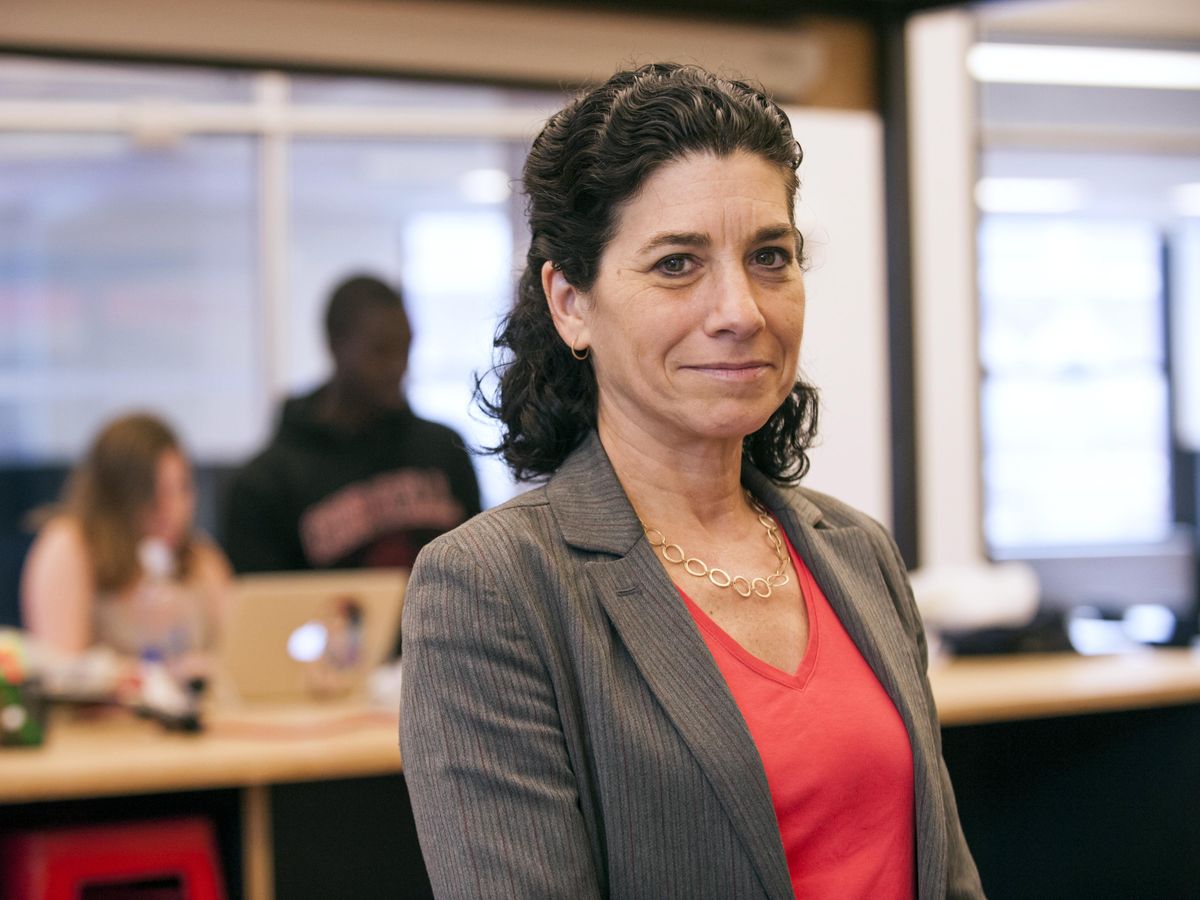Many of today’s engineering students want to work on technologies that address public-interest challenges, IEEE Fellow Deborah Estrin says.
Estrin, a computer science professor at Cornell Tech, in New York City, founded the school’s Public Interest Tech Initiative to give students that opportunity. PiTech helps them develop technologies to help meet societal needs such as accessibility, food security, and sustainability.
Estrin, who says she was “always intrigued with inventing and creating things,” has spent much of her career conducting research on technology for the public good. She helped create the Internet’s multicast protocols, which simultaneously send data to multiple destinations within the same network. And she pioneered research in sensor networks to collect and analyze real-time data about the world, for environmental monitoring and health applications.
The professor is the recipient of this year’s IEEE John von Neumann Medal for “leadership in mobile and wireless sensing systems technologies and applications, including personal health management.” The award is sponsored by IBM.
As it turns out, Estrin—whose parents are IEEE Fellows Gerald and Thelma Estrin—has a connection to von Neumann, a mathematician who made contributions to physics, computing, and game theory. In the 1950s he was her father’s first supervisor at the Institute for Advanced Studies, in Princeton, N.J.
“I’m honored that I received this award,” Estrin says, “and I smile to think what my parents’ reactions would have been if they were still around.” Estrin’s father died in 2012, and her mother died in 2014.
EMBEDDED NETWORKING SENSORS
Perhaps it’s no surprise that Estrin pursued a career in engineering and computer science. Her parents were pioneers in computer science and biomedical engineering. Her sister Judy is a successful tech entrepreneur, and her other sister, Margo, is a medical doctor.
Gerald Estrin led the development of the WEIZAC, the first digital electronic computer made in the Middle East, and he helped found the computer science department at the University of California, Los Angeles. Thelma Estrin, who also worked on the WEIZAC, championed the use of computers for medical research and treatment. At UCLA, she designed one of the first systems for analog-to-digital conversion of electrical activity from the nervous system. While Judy Estrin was a student at Stanford in the 1970s, she was a member of Internet pioneer Vinton Cerf’s group that helped develop the Transmission Control Protocol/Internet Protocol. She went on to found or help found eight technology companies, and she is currently chief executive of consulting firm JLabs, in Menlo Park, Calif.
Deborah Estrin says she’s always been drawn to experimental work. In the early 1980s, she conducted research in Internet security and architecture as a Ph.D. student in electrical engineering and computer science at MIT.
IEEE: A FAMILY AFFAIR
Estrin joined IEEE as a UC Berkeley student. Her mother, Thelma, got Estrin and her sister Judy memberships in the organization when they started college.
“[My mother] wanted to be able to tell her male colleagues that she had two daughters in the IEEE,” Estrin recalls.
“I’ve never considered letting my membership lapse, because of IEEE’s central role in the research and innovation community,” she says. “IEEE is a place for setting intellectual standards for publications, and it creates a place for a lot of open dialogue through conferences.”
She says that when she renews her membership, she does so in honor of her mother.
In 1985 she joined the University of Southern California, in Los Angeles, as a computer science professor. She continued to work on Internet protocols for USC’s Information Sciences Institute and was an active member of the Defense Advanced Research Projects Agency’s Internet Advisory Board (now known as the Internet Architecture Board) and the Internet Engineering Task Force.
During that time, she helped develop a method for communication among a collection of hosts; the technique is known as interdomain routing and large-scale protocol-independent multicast routing.
In the late 1990s, she worked on diffusion protocols to support in-network processing in large-scale sensor networks.
As study chair of the U.S. National Research Council’s committee on networked systems of embedded computers, Estrin led the exploration of potential uses of the emerging technologies in agriculture, environmental science, transportation, and logistics. The group’s 2001 report, “Embedded, Everywhere,” described a research agenda for distributed sensing that would enable large-scale systems, devices, and sensors to collect, share, and process information that could change the way people interact with their surroundings.
She left USC in 2000 to join UCLA and founded the Center for Embedded Networked Sensing. CENS brought together technologists, data scientists, seismologists, ecologists, and environmental engineers to research how embedded networked sensing could be used to study wildlife and the environment. One of her projects involved placing tiny imagers in birds’ nests to study the birds’ behavior and nesting cycles.
“I joined Cornell Tech to continue my own research but, more importantly, to help grow this institution.”
In 2006 Estrin expanded her research to digital health monitoring. She was one of the first researchers to leverage data collection on mobile phones to help patients and their caregivers better understand, monitor, and manage health outcomes. According to a 2018 article in the Cornell Chronicle, she and her team worked on “participatory sensing,” which collects usage data from cellphones, GPS tools, fitness trackers, and email to study people’s health. The work led her to help found the Open mHealth nonprofit in 2010. The startup uses open-source software to build customized applications that address health conditions such as chronic pain, diabetes, and depression.
That work resulted in Estrin being named a MacArthur Fellow in 2018. Known as the Genius Grant, the fellowship comes with a US $625,000 award, which Estrin used to help launch PiTech.
SUPPORTING PUBLIC SERVICE
In 2012 Estrin joined the recently created Cornell Tech. The New York City campus houses the Ivy League university’s business, law, and engineering schools. In addition to being a computer science professor there, she serves as an associate dean focused on fostering external partnerships.
“I joined Cornell Tech to continue my own research but, more importantly, to help grow this institution,” she says.
These days, Estrin’s work is focused on ensuring that engineering students get experience developing technology to help solve societal needs. Cornell Tech’s engineering master’s degree program, for instance, requires students to take part in the Studio series of courses wherein they develop tech solutions.
Most students work with startups, she says, but she was concerned that students weren’t being exposed to public-sector projects. So last year she founded PiTech to give them that experience.
The initiative consists of three programs. PiTech Studio is for master’s degree candidates who are interested in developing technology-based social ventures. The Impact Fellowships program supports doctoral students doing summer externships with public-interest companies working in criminal justice reform, climate change, public health, and similar arenas. The Visiting Practitioners program brings in well-known engineers who work on public-interest technology to give talks, mentor students, and provide feedback on students’ products and business ideas.
PiTech’s newest program, to be launched later this year, will support faculty members who dedicate their sabbatical to “do a social venture,” Estrin says.
- Ohio State President Makes Increasing Interdisciplinary Research ... ›
- IEEE Humanitarian Program Sees Record Growth - IEEE Spectrum ›
- IEEE Honors Pioneering Engineers - IEEE Spectrum ›
- Learn Who Will Receive a “Technology Oscar” From IEEE - IEEE Spectrum ›
- How Eddie Custovic Is Building His Legacy - IEEE Spectrum ›
- This Computer Pioneer’s Invention Made Zoom Possible - IEEE Spectrum ›
Joanna Goodrich is the associate editor of The Institute, covering the work and accomplishments of IEEE members and IEEE and technology-related events. She has a master's degree in health communications from Rutgers University, in New Brunswick, N.J.



